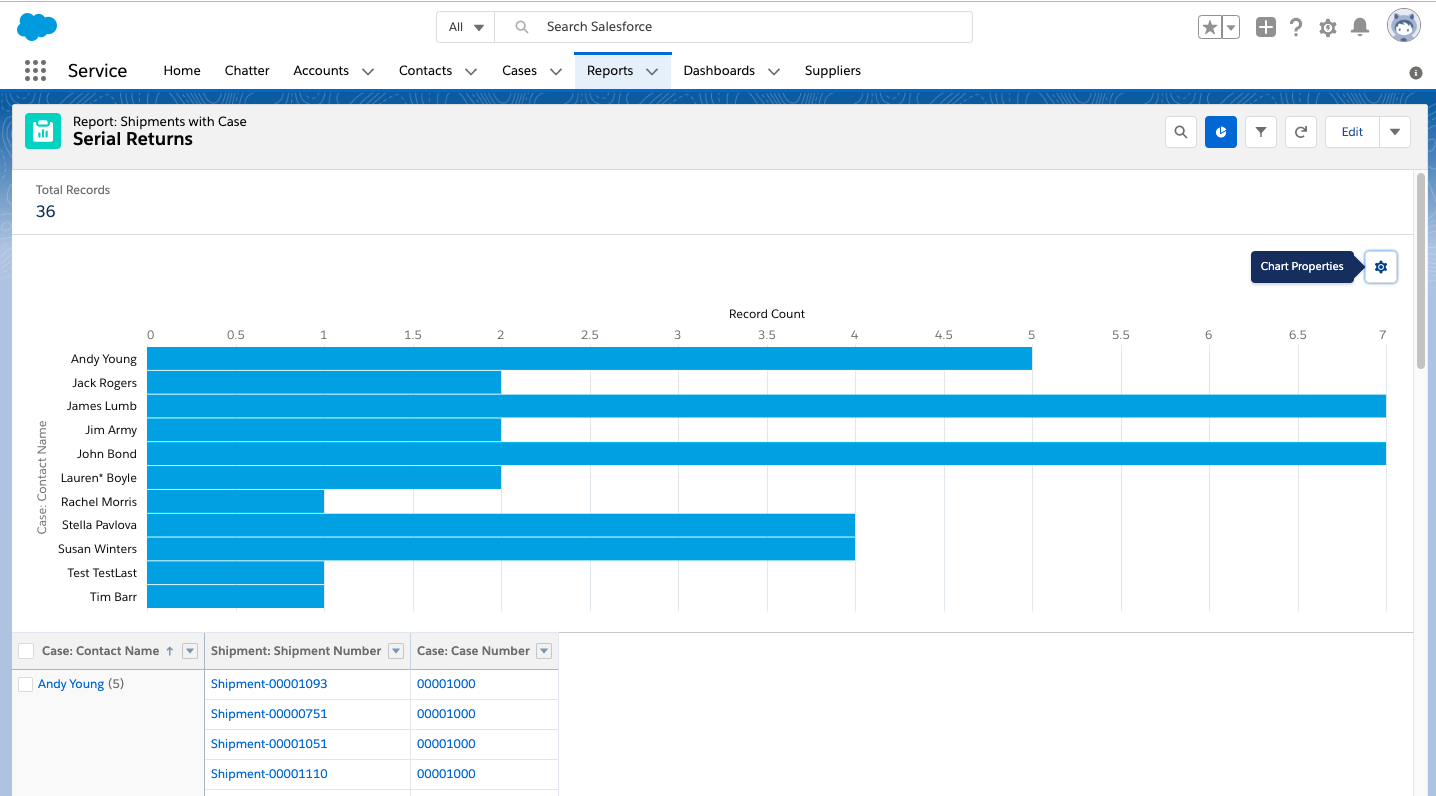Do you know which customers are consistently returning your products? Consumers generally hate returning items. So if a customer is making an excessive amount of returns, you should make an effort to understand why they are doing so.
Watch the video or follow these steps below to monitor customers who have made multiple returns.
How to Create a Serial Returns Report
Launch Service Cloud
Click on the Reports tab in the navigation bar.
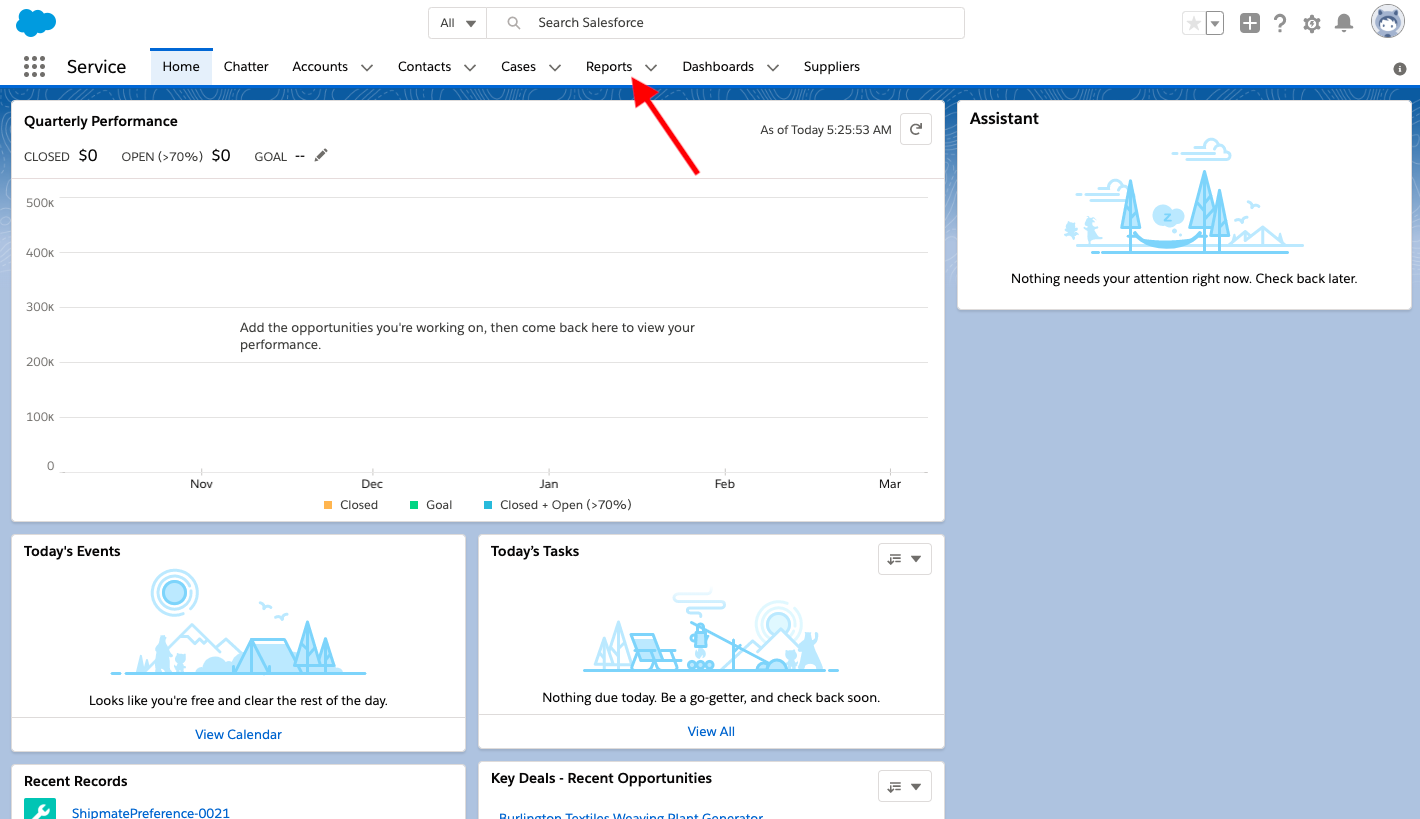
Then click New Report.
Choose Shipments with Case as your report type and click Continue.
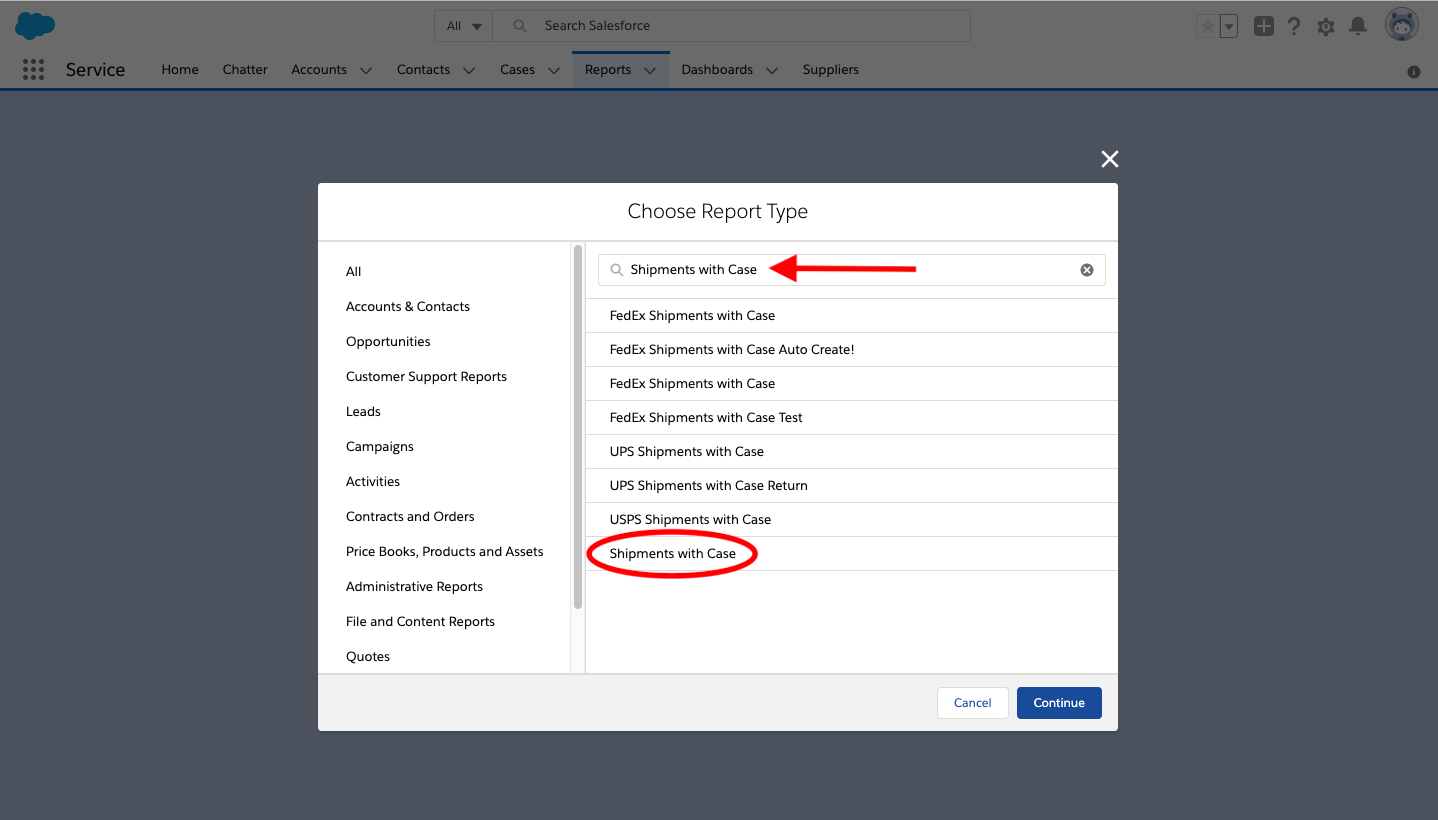
Add two columns: Case: Case Number & Shipment: Shipment Number
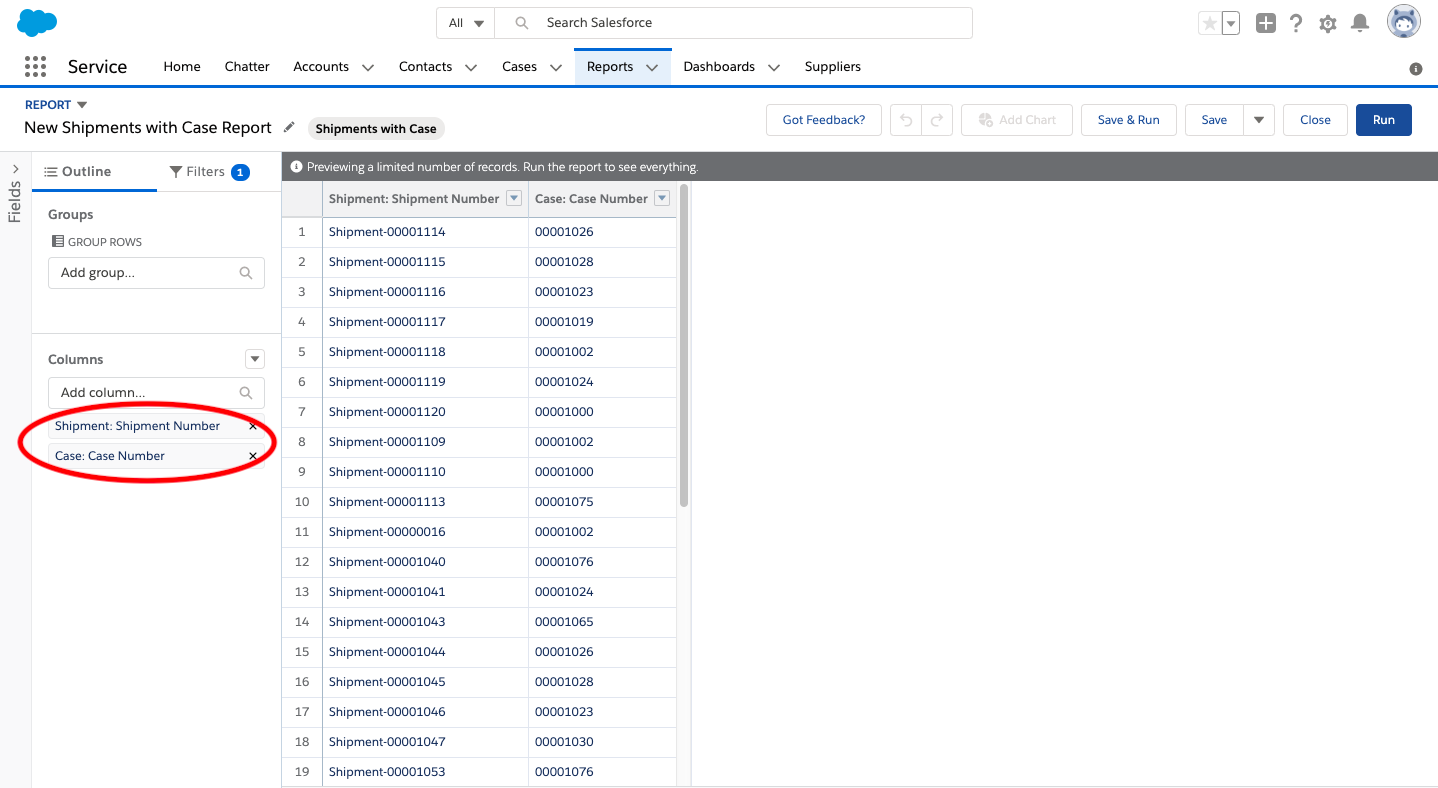
Group the report by Case: Contact Name
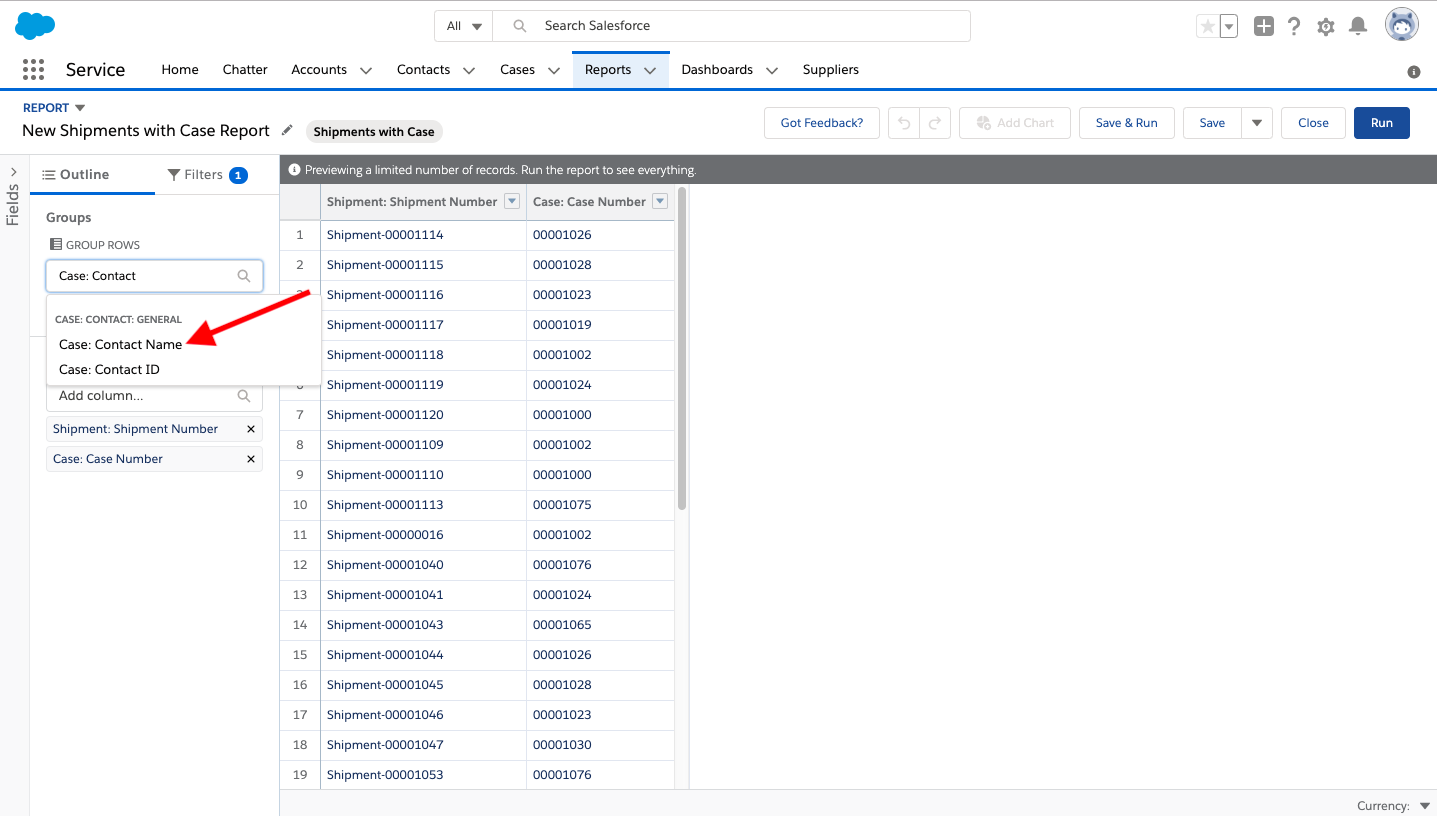
Then click on filters to further narrow the data that will be included in your report ( This is useful if you want to see your shipments or if you want to see shipments from a specific period of time.)
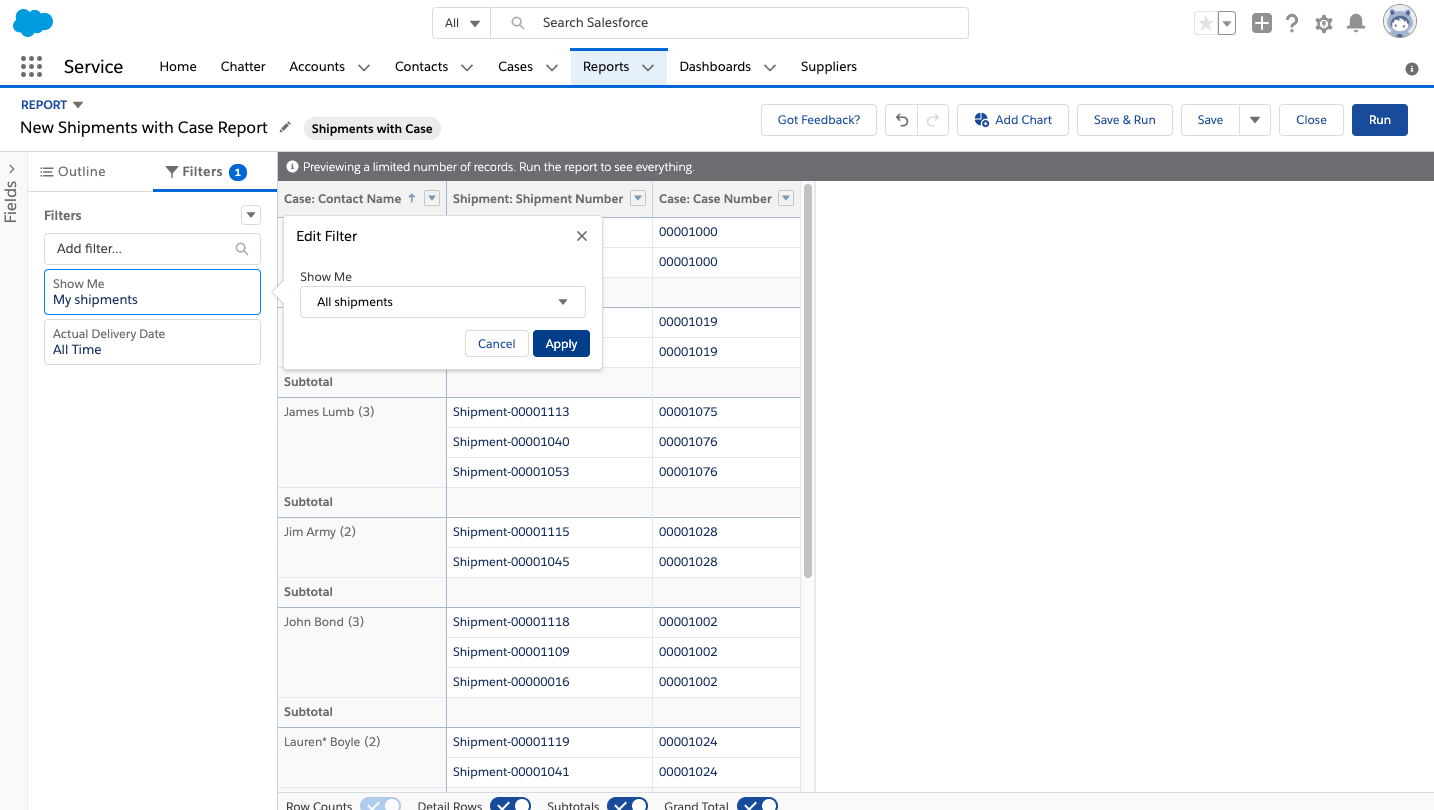
Now you are ready to run your report, click Save & Run.
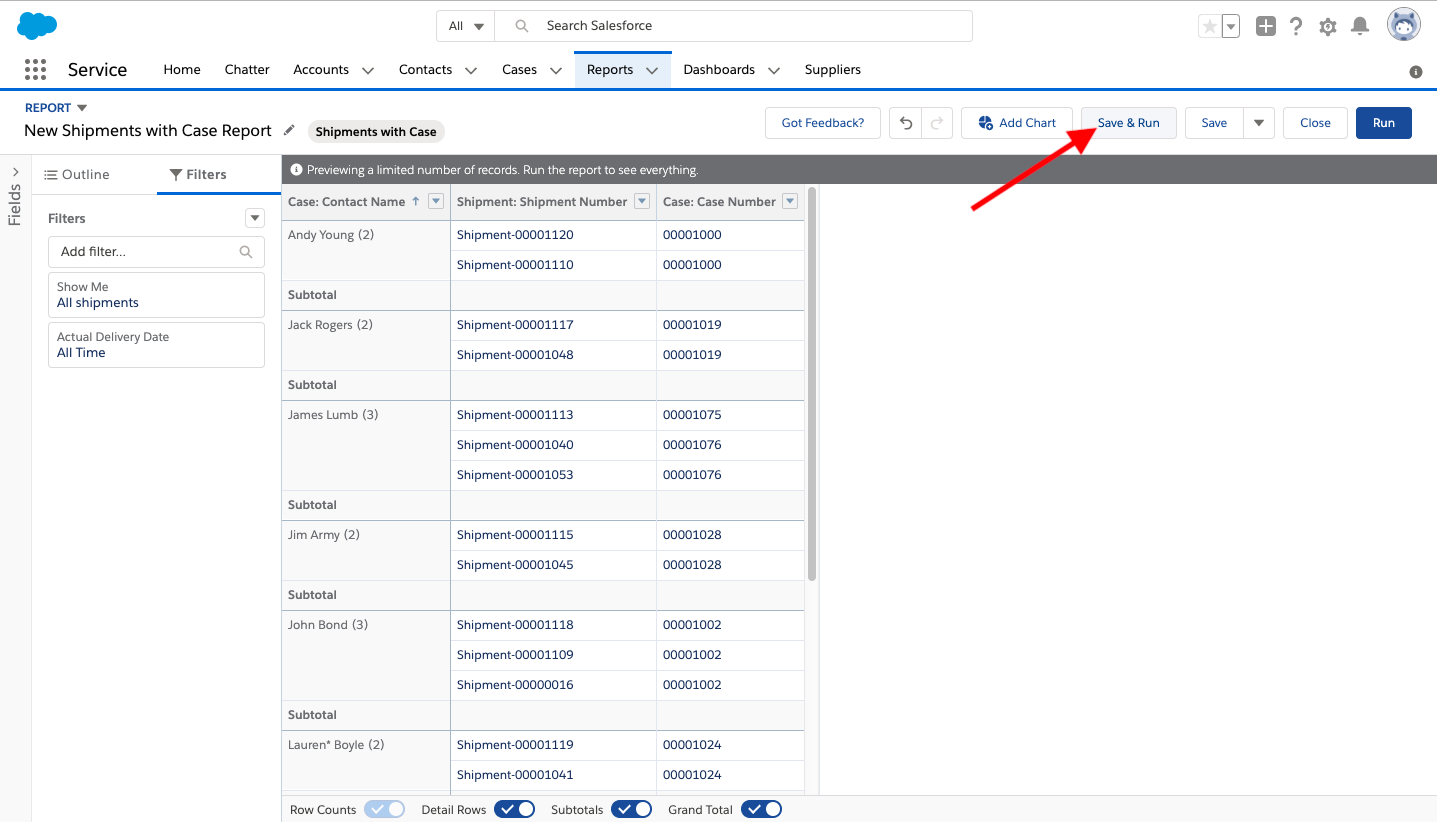
The next screen will allow you to name, describe, and manage report visibility.
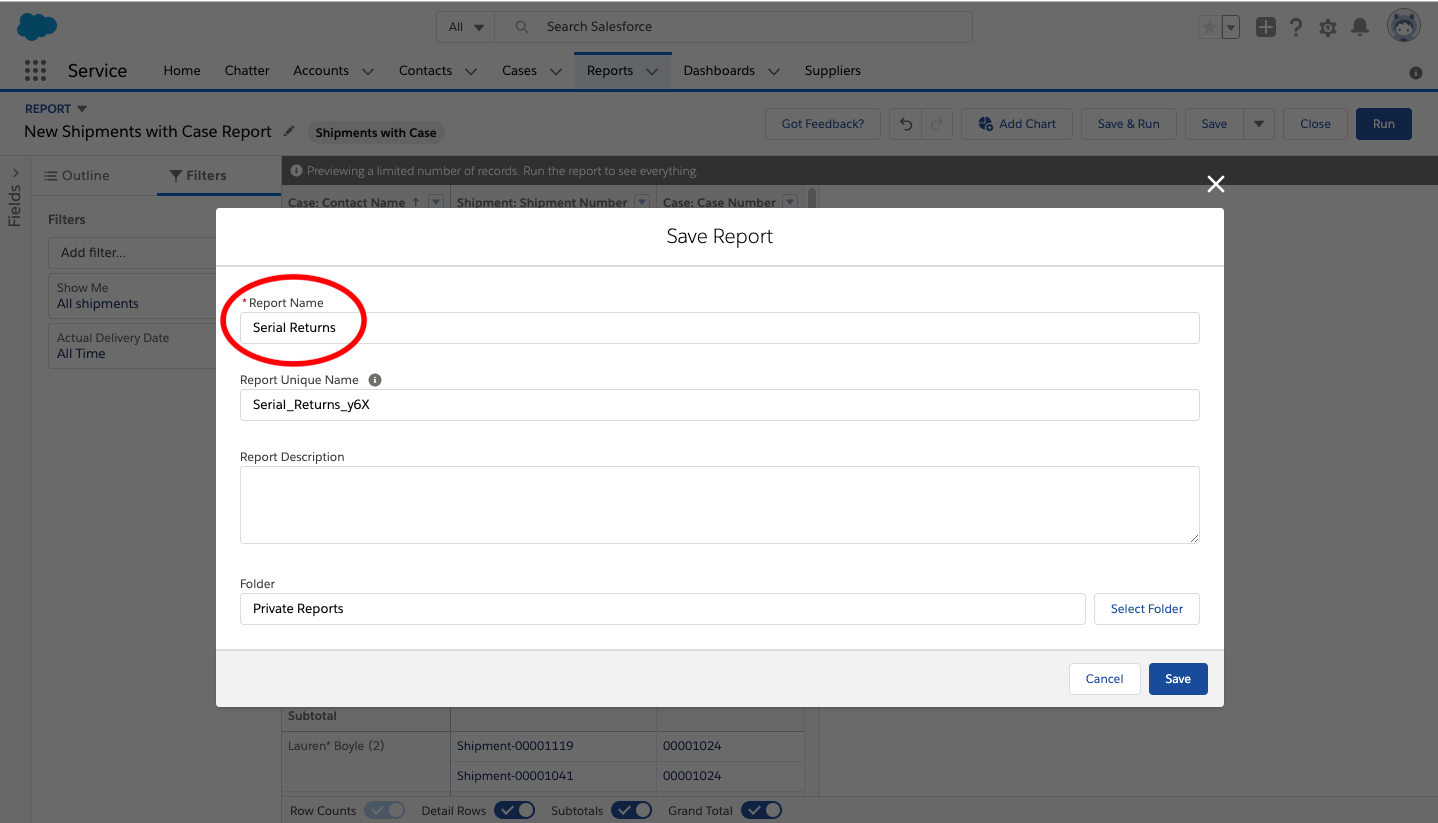
Clicking select folder allows you to choose the visibility of your report.
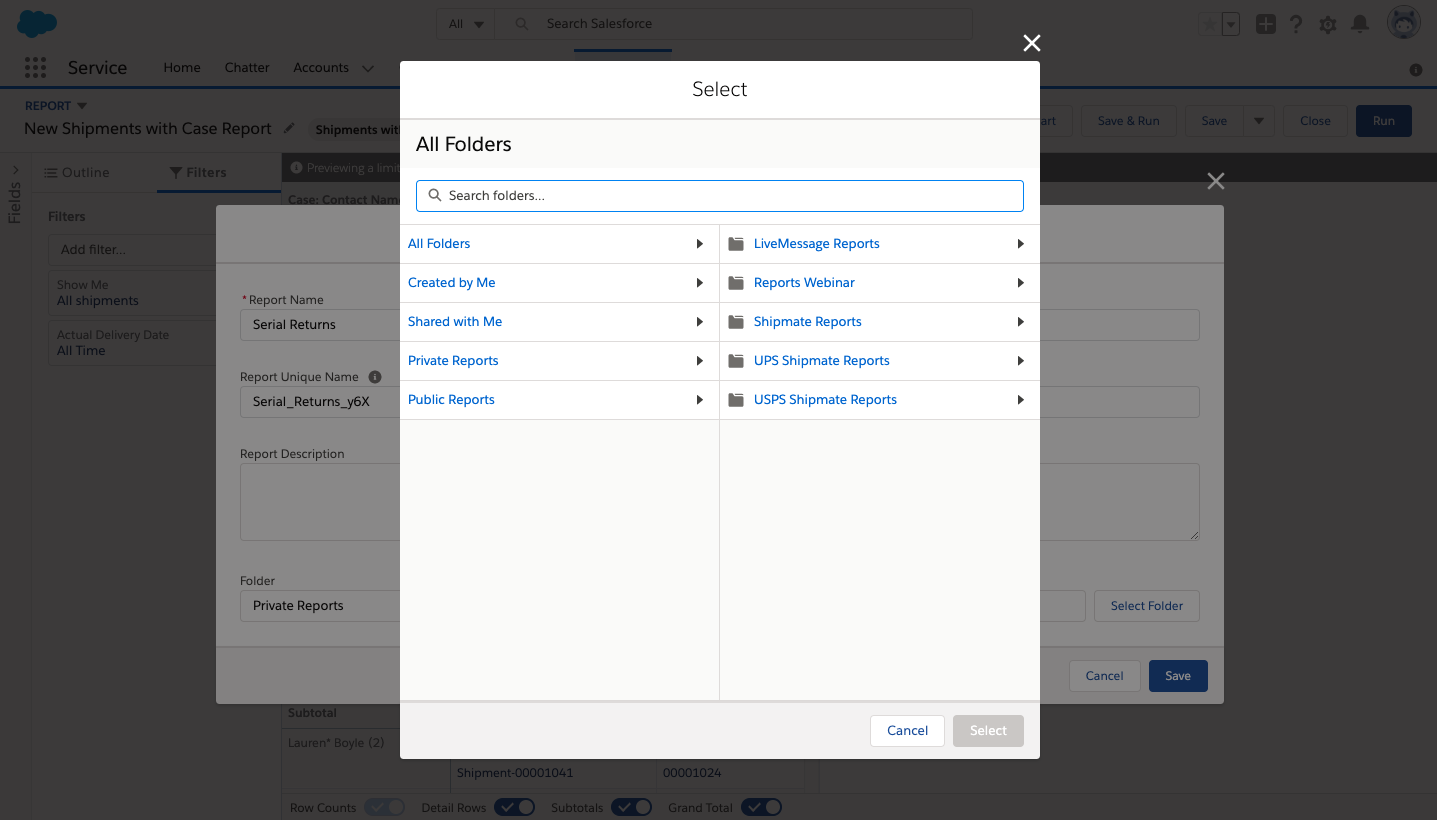
Last but not least, you can add a chart by clicking Add a Chart in the navigation bar. For Serial Returns, I chose a bar graph to easily identify the customers with the largest number of returns.
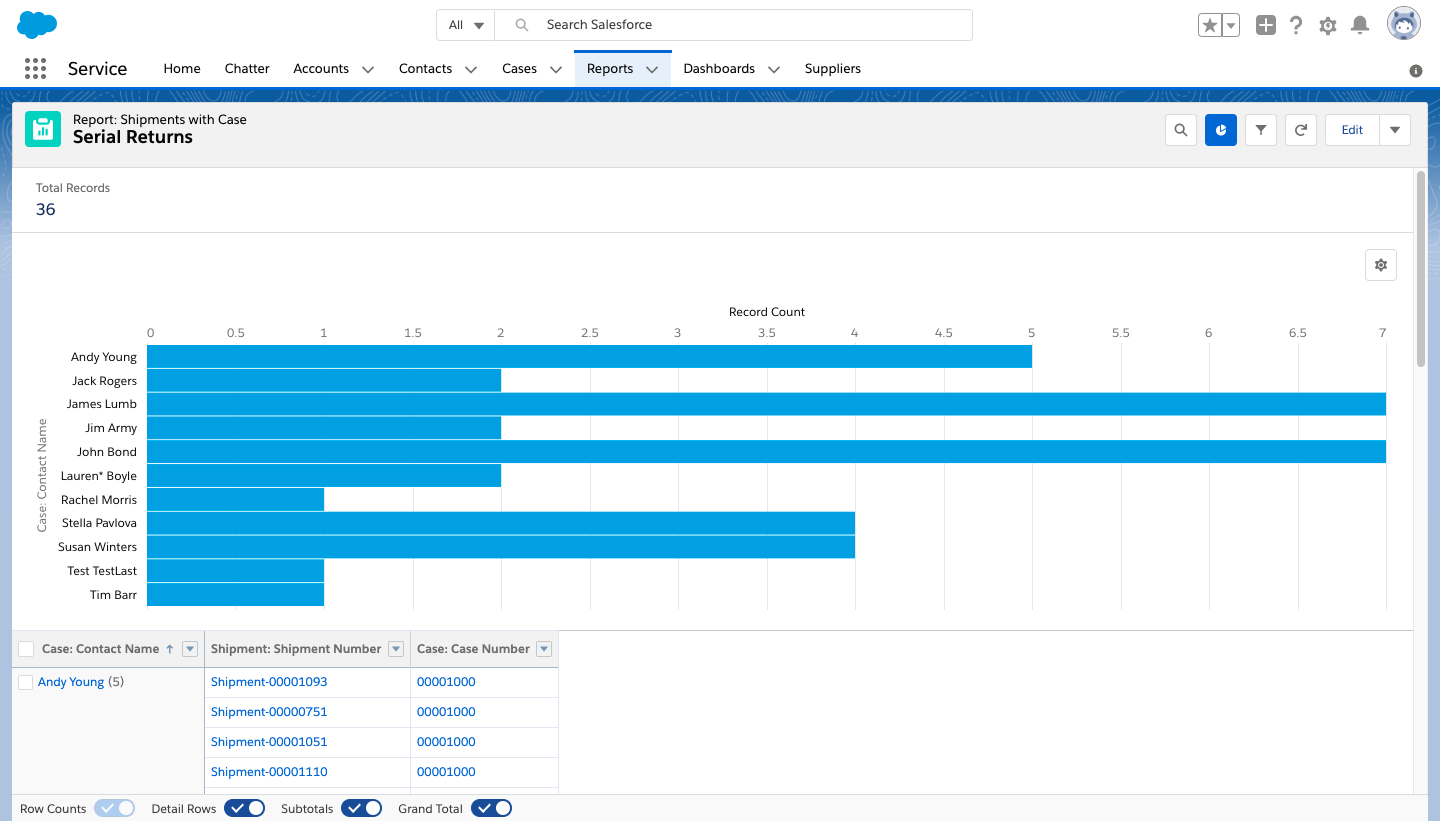
If you'd like to choose a different chart type, click the chart properties cog above the chart.
